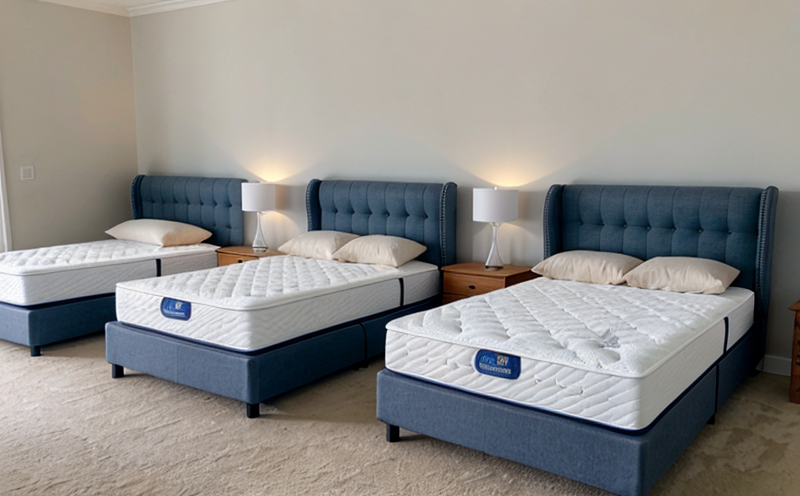ASTM F1427 Safety Testing for Bunk Beds Structural Integrity
The ASTM F1427 safety testing standard is specifically designed to evaluate the structural integrity of bunk beds, ensuring they meet stringent requirements for child safety. This service addresses a critical need in the furniture industry, particularly targeting beds and mattresses that are used by children. The test procedures outlined in this standard focus on preventing accidents caused by structural failures, which can be hazardous to young users.
The ASTM F1427 standard is widely recognized for its comprehensive approach to bunk bed safety testing, encompassing various aspects such as load-bearing capacity, stability under stress, and the robustness of connections. The primary goal is to ensure that bunk beds comply with all relevant international standards, which are crucial for product certification and market entry.
The testing protocol involves a series of detailed procedures designed to simulate real-world conditions. Specimens are subjected to static and dynamic loads to assess their ability to withstand typical usage patterns. This includes vertical loading tests to evaluate the bed frame's stability under weight, as well as edge load and pull-out tests for joints and bolts.
Environmental factors such as temperature changes and moisture exposure can also impact bunk bed performance. ASTM F1427 requires that specimens be tested in controlled environmental conditions to ensure they maintain their integrity over time. This ensures that bunk beds are not only safe but also durable, contributing significantly to the overall quality of life for children.
The standard's requirements extend beyond mere strength testing; it also mandates the evaluation of other critical aspects such as the presence of sharp edges, gaps between components that could trap fingers or limbs, and the overall design ergonomics. These considerations are vital in preventing potential injuries caused by improper bunk bed construction.
For quality managers and compliance officers, this service offers a robust framework for ensuring product safety and regulatory compliance. By adhering to ASTM F1427, manufacturers can demonstrate their commitment to child safety while also enhancing brand reputation and market credibility. R&D engineers benefit from the detailed insights provided by this testing process, which can inform design improvements and material selection.
The competitive advantage derived from this service is substantial. By ensuring compliance with ASTM F1427, companies can enter markets where stringent safety standards are enforced without facing regulatory barriers. This not only opens new avenues for international expansion but also reinforces the company's reputation as a leader in child-safe furniture.
| Standard Reference | Description |
|---|---|
| ASTM F1427-03 | Safety performance of bunk beds intended for use in schools, day-care centers, and other institutional settings. |
| EN 756-2:2019 | Bedding for children's furniture – Part 2: Bunk beds. |
Applied Standards
- The ASTM F1427 standard is designed to evaluate the structural integrity of bunk beds, focusing on load-bearing capacity and stability.
- It also addresses critical design elements such as sharp edges, gaps that could trap fingers, and overall ergonomics for child safety.
Environmental and Sustainability Contributions
The ASTM F1427 standard not only ensures product safety but also promotes sustainable practices by encouraging the use of high-quality materials that withstand environmental stress. By adhering to this standard, manufacturers can reduce waste associated with premature failures due to poor design or material selection.
Furthermore, compliance with ASTM F1427 helps in minimizing the carbon footprint associated with frequent replacement and repair of non-compliant products. The durability and robustness ensured by this testing contribute significantly to a more sustainable furniture industry.
Competitive Advantage and Market Impact
- Compliance with ASTM F1427 enhances market access in regions where stringent safety regulations are enforced, opening doors for international expansion.
- The reputation of being a leader in child-safe furniture can significantly enhance brand loyalty and customer trust, leading to increased sales and market share.





